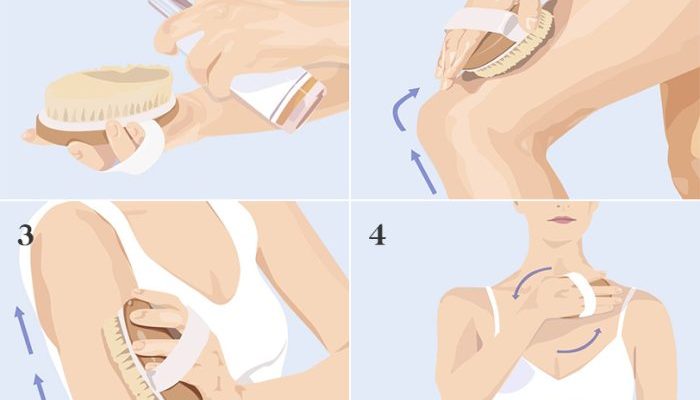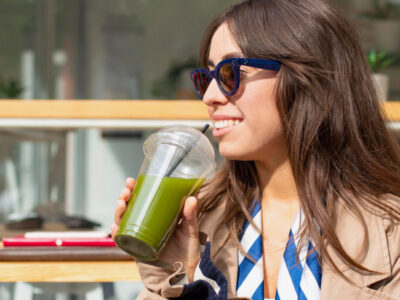
- A means of Ayurvedic Medicine that has been present for years, dry brushing is known to have multiple health benefits such as rejuvenating your skin. Additionally, it also removes toxins from lymphatic system, helping with your digestion, and getting rid of cellulite.Dry brushing is done by using a dry stifled brush made of natural fiber that you massage to your skin in a certain pattern.
The coarse fibers help exfoliate dead skin and increase the skin’s capacity to expel toxins through the pores.
Benefits of Dry Brushing
Moreover, dry brushing has become popular due to its claim of overall health improving benefits. The following are some of them:
Lymphatic System Stimulation and Removal of Toxins
The lymphatic system helps our bodies battle infection. Lymph nodes filter the fluids that circulate throughout the body.
If you have been unwell or have come in contact with a lot of pollutants, your lymphatic system may close with a variety of things. Thus, this is the reason why when you catch a cold, your lymph node becomes swollen.
Dry brushing stimulates the pores and opens them up. This helps your body release toxins through sweating. This decreases the number of toxins that your lymphatic system is filtering.
Aids in Digestion
Furthermore, apart from eating fiber-rich food and supplements with digestive enzymes, dry brushing is another habit known to help in digestion by improving nutrition absorption and opening pores.
Brushing your skin opens up the pores, helping it absorb nutrients and expel toxins from your body.
Removal of Dead Skin Cells
Dead skin cells don’t always shed completely, resulting in flaky skin, dry patches, and clogged pores. We can remove dead skin through exfoliation.
Dry brushing exfoliates our skin with the coarse natural fiber bristles that can scrub off the top layer of our skin where the dead skin sits. Removing dead skin cells will improve your skin as it prevents clogged pores and acne.
Tones the Muscles
Dry brushing is a great way to tone your muscles. It does this by stimulating nerve terminals, which activate and move specific muscle fibers. It also aids in the mobilization of fat and the dispersion of fat deposits. This is beneficial for people who are unable to exercise.
Tightens Skin and Reduces the Appearance of Cellulite
This benefit is the reason dry brushing is popular among women. Cellulite is a skin condition that affects women more than men and though it is normal to have it especially as we age, it causes a poor appearance.
Thus, women have been trying to look for ways to remove cellulite or decrease its appearance.
Since dry brushing helps improve blood flow, it also assists in transporting toxins away from the skin, thereby tightening it and reducing the appearance of cellulite.
Your Ultimate Guide to Dry Brushing
Dry brushing is best done just before a shower, but you can do it any time of the day.
Start with dry skin and moisturize afterward. Make sure to use a natural fiber brush that can either have a long handle or a palm-sized one. However, using a long-handled brush helps you reach all the areas of your body better.
Steps:
- Start with your feet or ankles and work your way up to your limbs. Brushing should be done with gentle, fluid strokes.
- Next, brush your torso and back by moving the brush in a circular motion.
- As you move to your tummy, breast, and neck, lighten the pressure as needed.
- Continue to brush upwards and end in your armpits.
- Take a cold shower to remove the dry skin
- Dry off and moisturize your skin. We recommend using natural plant oil for your skin.
Aftercare
-
The process of aftercare involves the steps that you must take after you are done with dry brushing.
-
It is important to take a shower after you are done with dry brushing.
-
This makes sure that the loose dead skin cells are removed and they are not clogging the pores.
The aftercare also includes moisturizing your skin and applying sunscreen irrespective of whether you are heading out or not.
Final Note
Though dry brushing has been practiced for many years, there is still no scientific data to back up its claims. But since there are some benefits to it, according to people who swear by this ayurvedic practice, you can still try this for yourself.
Remember to do it gently and carefully to prevent damaging the outermost layer of your skin. Make sure to follow our step-by-step guide above so that you too can reap the bountiful benefits of dry washing.
FAQs
1. How Many Times Should You Dry Brush?
Dry brushing is a great technique to keep your skin young and rejuvenated. However, it is a practice that must be done in appropriate intervals every day. You should do it once or twice a week, which should be sufficient for you to see results.
2. Is Dry Brushing Painful?
Unless you have already irritated skin and damage, dry brushing will not cause harm. Not following the technique and over-brushing the skin can lead to irritation, pain and soreness.
3. Can I Dry Brush My Face?
Dry brushing can work well to exfoliate your skin and prevent acne or breakout. As the technique can promote circulation, you may benefit from it. The technique must be done only sparingly than daily as it can damage the barrier and cause irritation or breakout.
4. Should I Use Oil For Dry Brushing?
You may use an oil to facilitate the process. but usually the point of dry brushing is to do it without anything else other than your skin-friendly dry brush. If you feel that there is too much friction, then you may use any massage oil.
5. Should I Use Coconut Oil For Dry Brushing?
Yes, you may use coconut oil for dry brushing. You may reap the dual benefits of dry brushing and the moisturizing properties of coconut oil. It is best to use coconut oil every once in a while as the benefits of dry brushing, even without the use of any oil.
6. Who Should Avoid Dry Brushing?
People who have skin conditions such as psoriasis, eczema or chronically dry skin must avoid dry brushing. This is because overdoing can lead to irritation, redness and peeling which may cause extreme discomfort.
Read Also:












